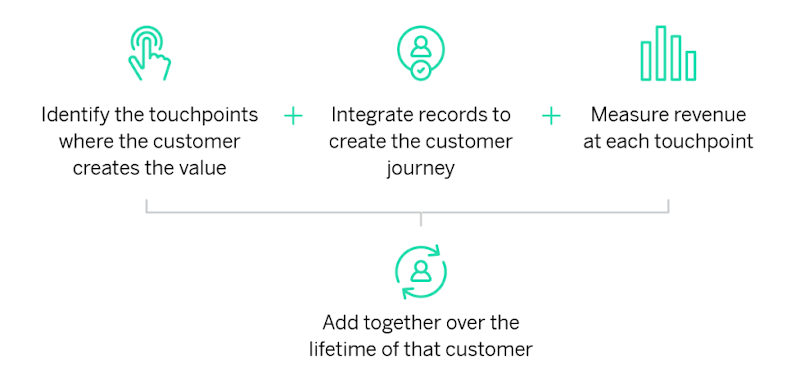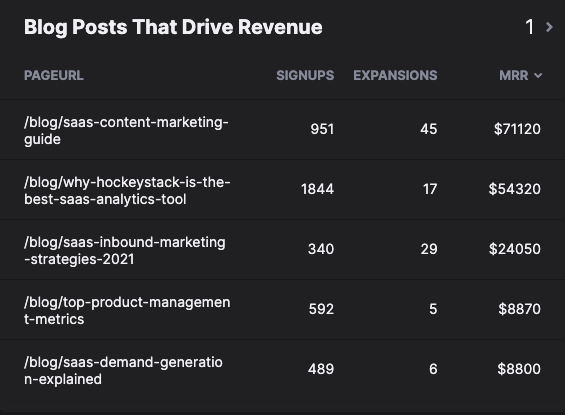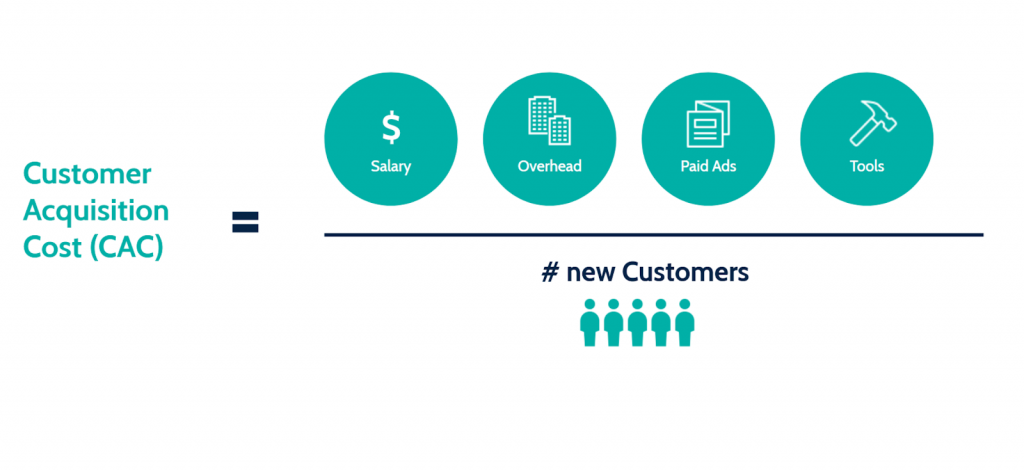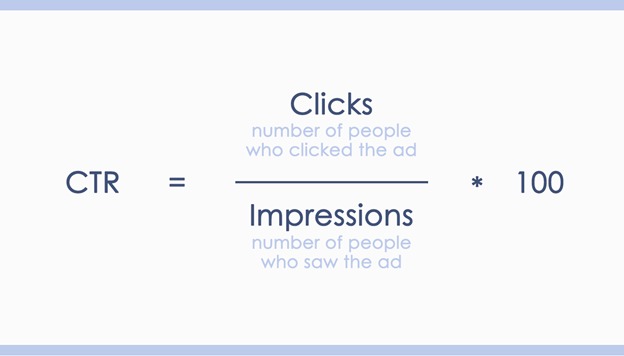10 MOST Important Customer Acquisition Metrics
Acquiring customers is a vital step for your SaaS business to be able to succeed, and it’s crucial to track these customer acquisition efforts. In this way, you can detect the performance and the growth of your company and then, get a clear idea to better them.
To attract customers and acquire them, observing whether your marketing efforts are working or not, and enhancing them are quite important for the improvement of your business. By the use of correct metrics, you can both track what is working with your marketing campaigns, and also easily find ways to improve them.
Keep reading to learn more about these customer acquisition metrics that will give you clear insights into your marketing efforts and your company’s performance.
Conversion Rate
Conversion Rate shows you the percentage of your trial users who later become your customers by deciding to pay after their free trial. The industry benchmark for the conversion rate from free trial users to paying customers of SaaS ranges between 4% and 30%. The type of free trial you use affects your conversion rate. There are three of them:
- Opt-in free trial is the one in which the benchmark rate is 8%-10% on average. This type of free trial does not require any credit card information to start one and does not ask for any until the free trial expires.
- Opt-out free trial, on the contrary, requires a credit card to start a free trial. Customers pay for your service automatically right after their free trial expires unless they cancel before the date. For this one, the average conversion rate is 25%.
- Freemium is basically the type of free trial that runs as long as a customer desires to keep it that way. Your customer can benefit from your service to a certain extent. They can’t use any of your premium features unless they pay for it, but can use the free version of your product for life. The conversion rate for this type of free trial ranges from 4% to 30%.
Note that, your free trial choice affects your Customer Acquisition Cost (CAC).
How to calculate Conversion Rate?
You can calculate your conversion rate by this formula:
Conversions / Total # of sessions = Conversion Rate
Why conversion rate is important?
Conversion rate is a great metric to detect which strategy works the best with your service. A high conversion rate indicates a good marketing strategy. It is also an effective way to understand the free trial version of your service is working with the customers or not. Also, you get a chance to better your marketing strategies to improve and enhance your conversion rate by using necessary resources that work well with your marketing strategies.
Demo signups
A demo or free trial is an important stage for your SaaS company to convert users into paying customers by attracting them to your product. Demo signups are a way to measure the ability of your marketing efforts that are supposed to draw them to your demo edition in the first place.
How to calculate Demo Signups?
You can use this formula:
Total Signups / Total Sessions
Why are Demo Signups important?
Demo signups are important to detect whether your marketing efforts and strategies work, to even attract them to try your demo edition. Demo signups let your customers try your product first-hand before committing by paying. It also helps you present and exhibit your business to your potential paying customers who would enhance your LTV, and so your revenue. Whether your Demo Signups are working is also knowing more about your user experience and your product.

Revenue by channel

Revenue by Channel is a revenue attribution dashboard that shows you where your customer comes from, their Lifetime Value (LTV) which gives you the info of the average revenue they bring to your service during their stay, and how valuable that specific customer is to your company, and Annual Contract Value (ACV) says about the value of annual contract of the customer. I’ll be explaining these two metrics right below in more detail.
The dashboard helps you monitor your revenue by channels and by which you profit. This can also allow you to draw a content marketing strategy accordingly in your customer acquisition program.
Lifetime Value
Customer Lifetime Value (LTV or CLV) is the metric that measures the value a customer brings to your company. Acquiring new customers is actually five times more costly than keeping them. Eventually, keeping them longer will bring your company more profit because the more they stay in your service, the more money they will spend on it.
How to calculate LTV?
You can use this formula:
(Customer Revenue per year * Duration of subscription in years) – Total cost of acquiring and serving the customer = LTV
Also, you can:

Why is LTV important?
LTV is in fact quite an important metric that shows you customer loyalty and your customer engagement success. Also, since acquiring new customers is much more expensive, optimizing LTV is a great way to get a steady cash flow.
Annual Contract Value
Annual Contract Value (ACV) is the metric that calculates the total revenue of an annual contract with each customer of SaaS companies who uses yearly or multi-year contracts. This metric is not typically used by itself. In general, it is compared to other metrics such as CAC and ARR. Through this, you can get valuable insights into your company’s direction.
Generally, B2B companies have large ACVs because as a strategy, they prefer enhancing their customer retention due to high customer acquisition costs (CAC).
How to calculate ACV?
You can use this simple formula:
Total Contract Value / Total Years in Contract = ACV
However, since ACV is not an industry-standard metric, not every business calculates it the same. For instance, some companies include one-time fees.
Why is ACV important?
Knowing your annual contract value is in fact important for the health of your SaaS company. Calculating your ACV can:
- Give you insight into the marketing strategy of your company
- Show you how long it takes to pay back your CAC
CAC: LTV
The ratio of lifetime value to customer acquisition cost enables you to determine the number of your expenses to get a customer. LTV: CAC formula shows if your payment per customer is excessive or you are not gaining new customers because you don’t pay enough. In SaaS businesses, it is essential to achieve higher gross profit per customer than the customer’s cost of acquisition.
How to calculate CAC: LTV?
The LTV: CAC ratio is an important indicator to show whether the company is achieving sustainable growth. The formula is basically dividing your LTV by your CAC. I’ll explain how to calculate them individually right below.
In general, it is advised to aim for a ratio of 3:1 or higher for SaaS businesses. An LTV: CAC ratio of fewer than 1:1 means that the more you sell, the more you lose. The high LTV: CAC ratio also indicates sustainable growth. However, it is also undesirable for this ratio to be too high. A very high LTV: CAC ratio indicates that you are spending less and therefore the growth is restrained.
Why is CAC: LTV important?
LTV: CAC ratio is an efficient method to detect the future prospects of a company. In that way, you can create more effective strategies to serve your existing customer, and also you can gain new customers that are interested in your product. In addition, achieving the optimal 3:1 ratio will be an important criterion in terms of attracting possible investors.
Revenue by marketing activity
Your revenue by marketing activity allows you to monitor what are your signup, expansion, and MRR (monthly recurring revenue) numbers your marketing activities, like blog posts and sources, bring.
Not all marketing activities would bring the same numbers. Still, analyzing your signups, expansion, and MRR will help you draw a road map on your marketing strategy and activity to acquire customers.

CAC
Customer Acquisition Cost (CAC) is the metric you can measure the amount you need to pay to get a new customer to your service. This cost includes the total amount you spend on marketing, sales, and tools. As I’ve explained above, customer acquisition is a costly process, in fact, 92% of first-year revenue is spent on it.
It is always a good sign that your CAC is low while your revenue from customers is high because it would mean you will profit.
How to calculate CAC?
You can use this formula:
Total Costs of Sales and Marketing / # Customers Acquired = CAC
Note that, you need to determine a time period you prefer to know. Calculating on monthly basis is recommended since it would give you more accurate results on total costs. In this way, it is less likely to over or under calculate your CAC.
Why CAC is important?
Knowing your customer acquisition cost is important because:
- Balancing your revenue is crucial, but to do this you need to detect how long it will take to recover from your spending on CAC.
- It is quite likely that you will not start profiting any sooner than you plan to due to CAC, being aware of your standing helps you make clear forecasting.
- Knowing your margins, profit and revenue are vital for being able to improve your business, and knowing your CAC is the first step.

CTR
Click-Through Rate (CTR) is the metric to see how effective the digital advertising you use for your company is. In other words, you get to see whether your customers are interested in your marketing efforts or not by looking at the click numbers.
Note that:
This metric will not show you any monetary value. It will only refer to the rate of engagement with your advertisements.
How to calculate CTR?
To find your Click-Through Rate:
- Take the total number of customers who clicked the link
- Divide it by the total number of customers who viewed the link
- Then, multiply by 100

Why is CTR important?
It is important to know your CTR to get comprehensive information on which of your ads and keywords work best with your B2B SaaS marketing strategy. In other words, it shows you the success of your online advertising and email campaigns.
Also, your click-through rate allows you to see whether you target the right audience or not. Low CTR indicates you are on the wrong path in terms of your target audience. So that, your CTR benefits your customer acquisition program.
CPC
Cost-per-click, CPC for short, is the metric that allows you to see the cost you pay for every click your ads receive. It is also used by websites to calculate bills you need to pay.
This payment is made if the advertisement your company features gets clicks. In other words, getting impressions or views does not mean you’ll pay for the ads. You pay search engines for the clicks.
Note that:
The CPC is not the same for every ad. The cost depends on a couple of things: keywords and industry.
How to calculate CPC?
You can use this specific formula:
Total Money Spent / Total Measured Clicks = CPC
The lower your CPC the more successful is your ad campaign.
Why is CPC important?
CPC is an important metric for your SaaS marketing because your business is done online, it has huge importance that you invest in digital marketing. Knowing your CPC is great in the sense that you get to know your marketing success by paying for each click, which also gives you an accurate understanding of your marketing campaigns whether they work or you need to improve.
Also, you can determine if the cost you pay for certain ads is worth its cost, or not and you pay too much.
Plus, it allows you to decide whether to stop or pause on a certain ad if you are on a budget. You can control it by looking at this metric.
Conclusion
Customer acquisition metrics are great for measuring whether your marketing campaigns are working with your business to attract customers to acquire. These metrics will also give you a clear insight into the ways to better your marketing strategies.
FAQ
How do you measure customer acquisition success?
You can measure your customer acquisition success with CAC: LTV metric. The ratio is found by dividing your customer acquisition cost by customer lifetime value. The average ratio is three to one.
What are the 3 parts of the customer acquisition cycle?
Three parts of the customer acquisition cycle are leads, prospects, and customers. Leads are creating awareness and interest in your product to lead them to your service. Prospects are the consideration, intent, and evaluation part of your product by your potential customers. The last part, customers, involves the purchase, in other words, completing the customer acquisition cycle. To learn more about these stages, please visit: Guide To Customer Acquisition Funnel
What is the KPI of a customer acquisition program?
The KPI of a customer acquisition program would be CAC (customer acquisition cost). Your CAC: LTV ratio and conversion rate are also important KPIs for your customer acquisition program.



